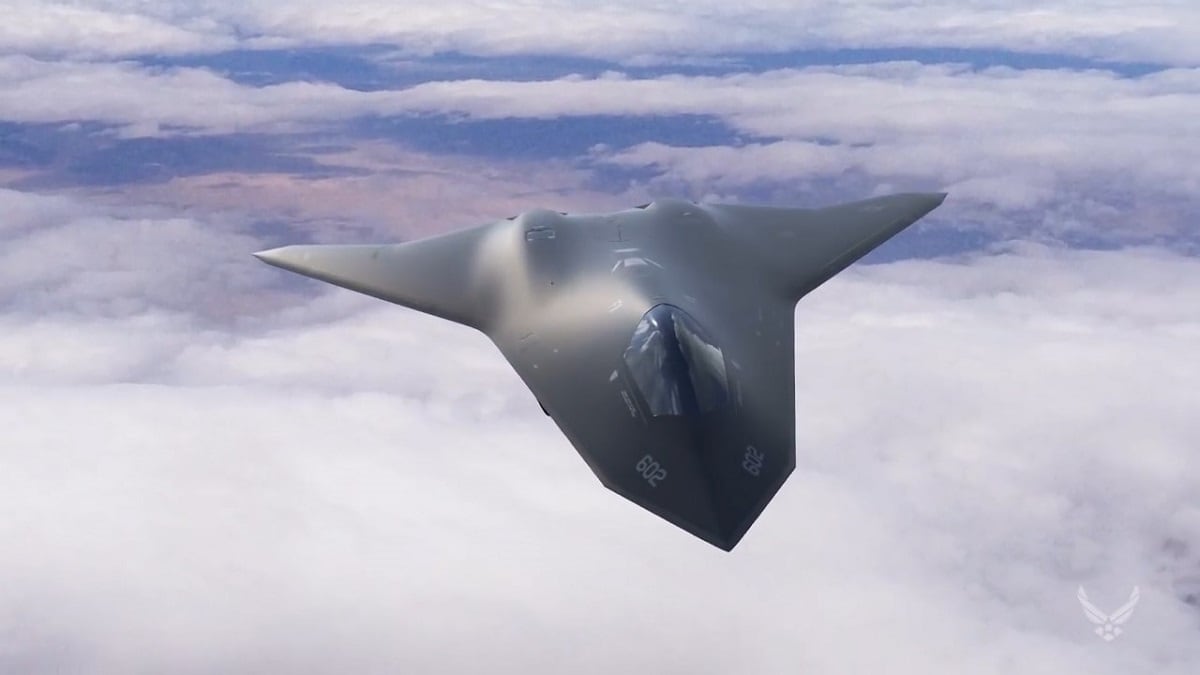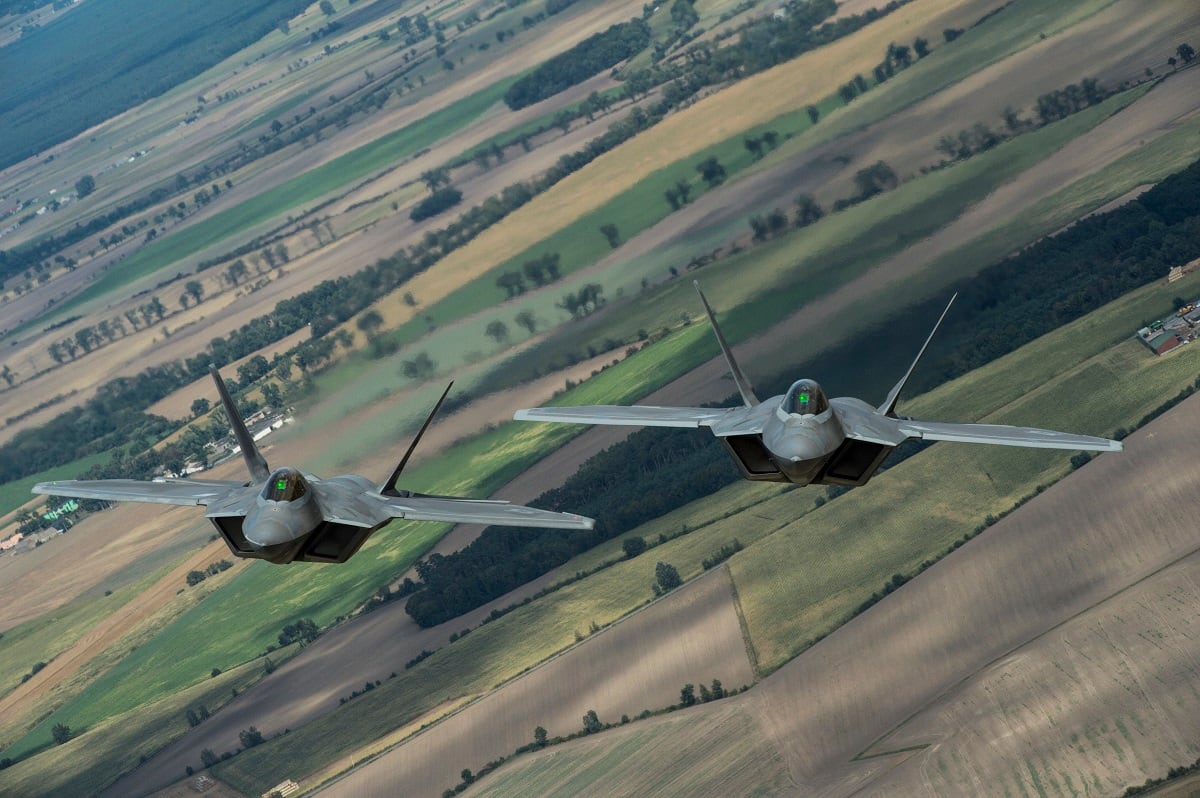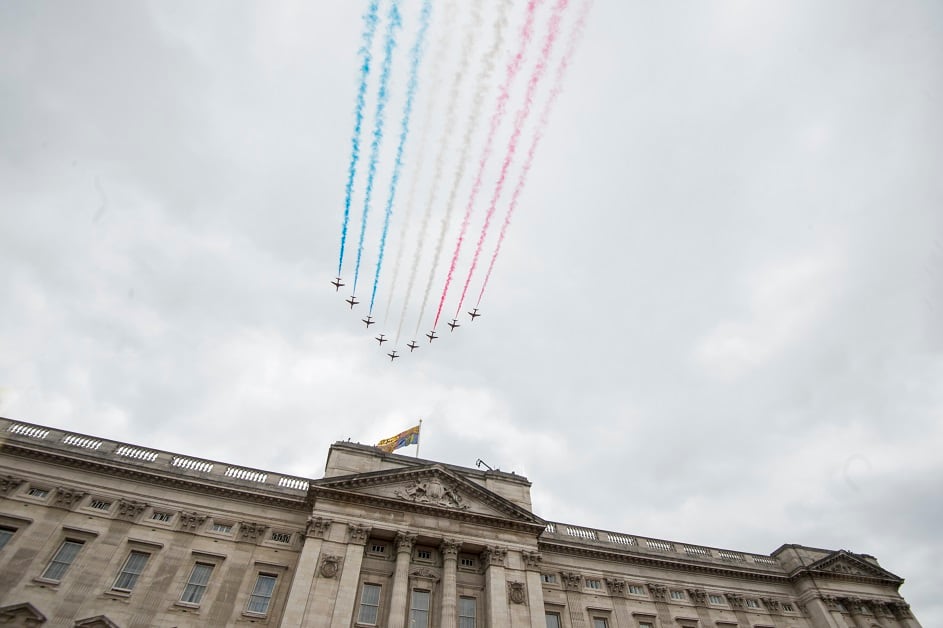WASHINGTON — A next-generation air superiority jet for the U.S. Air Force, known by the service as Penetrating Counter Air, could cost about $300 million in 2018 dollars per plane, the Congressional Budget Office states in a new study.
At that price, PCA would be more than three times that of the average F-35A jet, which is set at about $94 million to capture both the expense of early production lots and the decline in cost as the production rate increases, according the report, which predicts the cost of replacing the Air Force’s aircraft inventory from now until 2050.
This sum, while not an official cost estimate from the Pentagon, represents the first time a government entity has weighed in on the potential price tag for PCA.
RELATED

The CBO estimates the Air Force will need 414 PCA aircraft to replace existing F-15C/Ds and F-22s, the Air Force’s current fighters geared toward air-to-air combat. It also surmises that the first aircraft will enter service in 2030, based on the service’s stated desire to begin fielding PCA around that time frame.
The reason for the whopping price tag?
Part of it comes down to the cost of new technology.
“The PCA aircraft would probably have a greater range and payload, as well as improved stealth and sensor capabilities, than today’s F-22; those characteristics would help it operate in the presence of the high-end air defenses that DoD believes China, Russia, and other potential adversaries may have in the future,” the CBO states.
The other reason comes down to history.
The Air Force doesn’t have a great track record when it comes to producing stealth aircraft at the low costs initially envisioned by leadership. Both the B-2 and F-22 programs were truncated in part due to the high price per plane — which in turn contributed to the production rate never accelerating to the point where unit costs begin to decrease. The early years of the F-35 program were also marred by a series of cost overruns that eventually prompted the Pentagon to restructure it.
“Containing costs for the PCA aircraft may be similarly difficult,” the report states.
The Air Force has said little about PCA since the release of the Air Superiority 2030 flight plan in 2016, which stated a need for a new fighter jet that would be networked into a family of systems of other air, space, cyber and electronic warfare technologies.
“The replacement may not be a single platform,” Gen. Dave Goldfein, the Air Force’s chief of staff, told Defense News earlier this year. “It may be two or three different kinds of capabilities and systems. And so as we look at air superiority in the future, ensuring that we’re advancing to stay ahead of the adversary, we’re looking at all those options.”

Although Air Force leadership won’t say exactly what it’s doing to develop PCA or when a new jet may be coming online, it’s clearly making investments. In the fiscal 2019 budget, the service requested $504 million for “next-generation air dominance,” its portfolio of future fighter technologies and weapons. The Air Force expects to ramp up funding to $1.4 billion in FY20, hitting a high in FY22 with a projected $3.1 billion in spending.
RELATED

According to the CBO’s analysis, Air Force procurement of new aircraft could peak at about $26 billion in 2033, as the service buys both the F-35 and PCA. Those two fighters, together with the B-21 bomber, are set to be the largest drivers of cost as procurement reaches its height in the mid-2030s.
“Although the Air Force could probably modify both retirement plans and replacement schedules to smooth out the 2033 peak, the average annual costs of procuring new aircraft would still be higher than in the recent past: $15 billion in the 2020s, $23 billion in the 2030s, and $15 billion in the 2040s,” the report states.
Dealing with an upcoming bow wave
CBO’s estimates included 35 platforms that will be replacing legacy systems, with six programs making up more than 85 percent of the projected procurement costs cited throughout the report: the F-35, PCA, the KC-46A, the B-21, the C-130J cargo plane as well as the yet-unannounced C-17 replacement.
The report envisions a future where the Air Force is allowed to retire all of its legacy fighter and attack aircraft — the A-10, the F-15, the F-16 and even the F-22 — in favor of three aircraft: the F-35, PCA and a light attack aircraft configured to take on low-threat missions.
The Air Force has yet to decide whether to buy a light-attack aircraft or how extensive its purchase may be, although the service is expected to put out a request for proposals by the end of the month.
“Funding for new fighter aircraft makes up about half of the total projected costs of procuring new aircraft,” the CBO states, with the F-35 set to be the most expensive program through the 2020s until PCA takes its place in the early 2030s.
RELATED

The Air Force could decrease costs in a couple of ways, although all of them come with significant drawbacks.
For one, it could extend the lives of its legacy fighter and attack aircraft, and delay programs like PCA. However, the CBO notes that “obtaining replacement parts can be both difficult and expensive, and a refurbished fleet may not provide as many available and mission-capable aircraft as a new fleet.”
If the service wants to increase the availability of its inventory without paying the high price associated with developing a new stealth fighter, it could retire its legacy F-15s and F-16s and buy new ones. That option is probably more expensive, but would result in aircraft that are more reliable.
The Air Force could also defer the PCA program while allowing some of its legacy aircraft to be retired, the CBO posits.
However, Air Force leadership contend that the service is already too small, with Secretary Heather Wilson arguing that the number of operational squadrons needs to increase from 312 to 386 — a goal that necessitates buying more aircraft.
Valerie Insinna is Defense News' air warfare reporter. She previously worked the Navy/congressional beats for Defense Daily, which followed almost three years as a staff writer for National Defense Magazine. Prior to that, she worked as an editorial assistant for the Tokyo Shimbun’s Washington bureau.





